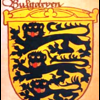The Syrian Army
-
Подкрепете ни
-
Теми
-
- 40 мнения
- 2125 views
-
Нов, непознат тип печат на Симеон с католическа корона доказва, че папата го е признал за император на ромеите, както свидетелствува Блазиус Клайнер
От natan, in Средновековна история
- цар симеон
- католическа корона
- (и 2 повече)
- 22 мнения
- 465 views
-
- 2689 мнения
- 155962 views
-
- 58 мнения
- 2609 views
-
Руско-украинската война 2022-2024 година. 1 2 3 4 133
От Р. Теодосиев, in Руско-украинската война 2022 година.
- 3310 мнения
- 159524 views
-
-
Последно разглеждащи 0 Потребители
- No registered users viewing this page.





Recommended Posts
Напиши мнение
Може да публикувате сега и да се регистрирате по-късно. Ако вече имате акаунт, влезте от ТУК , за да публикувате.